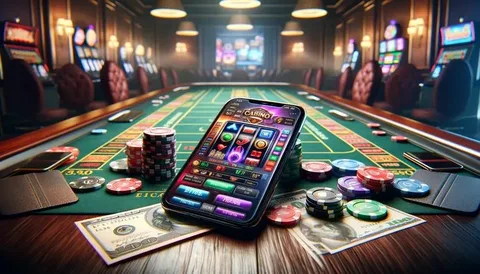A Brief Spin Through History
The slot machine’s journey began in the late 19th century. The true precursor to the modern game was the “Liberty Bell,” invented by Charles Fey in 1899. This machine introduced the familiar three-reel setup and was the first to offer automatic cash payouts. Early machines often featured simple symbols like horseshoes, stars, and the eponymous Liberty Bell.
The 1960s brought the electromechanical revolution with machines like “Money Honey,” which replaced the internal mechanical workings with electronic components, allowing for larger payouts and a faster pace of play. The final major shift came with the rise of video slots in the 1970s, which completely replaced the physical reels with digital screens, paving the way for the themed, feature-rich games we know today.
The Anatomy of a Modern Slot
Today’s slots are sophisticated pieces of software, offering players a variety of styles and technical specifications to choose from:
- Classic Slots: These games retain the nostalgic charm of the originals, typically featuring three reels and a limited number of paylines (often 1 to 5). Symbols are usually fruits, bars, or sevens, appealing to players who prefer simple, straightforward gameplay.
- Video Slots: The most common type, these usually feature five or more reels and a vast number of paylines (often 20 or more, sometimes up to hundreds). They are known for their high-quality graphics, immersive themes, and complex bonus rounds.
- Progressive Jackpots: These slots link a small percentage of every wager from every player across multiple games or casinos into one rapidly growing prize pool. The jackpot can climb into the millions, offering a life-changing payout for a single, lucky spin.
- Megaways and Unique Mechanics: Innovative formats like Megaways feature a dynamic reel modifier that changes the number of symbols on each reel with every spin, often creating thousands of ways to win (sometimes over 100,000). Other features include Cascading Reels, where winning symbols disappear and are replaced by new ones, allowing for multiple wins on a single paid spin.
Features That Drive Excitement
Modern slots are defined by their special features, which turn simple reel-spinning into an interactive experience:
- Wild Symbols: These act as substitutes for most other symbols, helping to complete winning paylines.
- Scatter Symbols: These are the key to unlocking the main events. Landing a minimum number of Scatters anywhere on the reels—not necessarily on a payline—usually triggers the Bonus Round.
- Free Spins: The most popular bonus, this feature awards a number of spins that cost the player nothing but still offer the chance to win real money. Free Spins often include Multipliers to increase payouts.
- Bonus Rounds: These are interactive mini-games, such as “Pick-and-Win” challenges or “Wheel Spins,” which take the player away from the main reels for a chance to win extra prizes.
Choosing Your Game: RTP and Volatility
For many players, the key to choosing a slot lies in understanding two fundamental technical concepts:
- Return to Player (RTP): This is a percentage that indicates the expected amount of wagered money a slot will return to players over a large number of spins. Most games range between 90% and 98%. Generally, a higher RTP is better for the player.
- Volatility (or Variance): This refers to the risk level of the slot.
- High Volatility slots offer larger, but much less frequent payouts. These are suited for “risk-takers” chasing a massive jackpot.
- Low Volatility slots provide smaller, but more consistent wins, offering longer playtime and a steadier return.
Ultimately, the perfect slot is one that matches the player’s budget, patience, and preferred theme. From the mythical lands of Ancient Egypt and Greek Gods to classic “fruit machine” charm and blockbuster movie tie-ins, the modern slot offers a vast and thrilling digital frontier for every kind of gamer.


